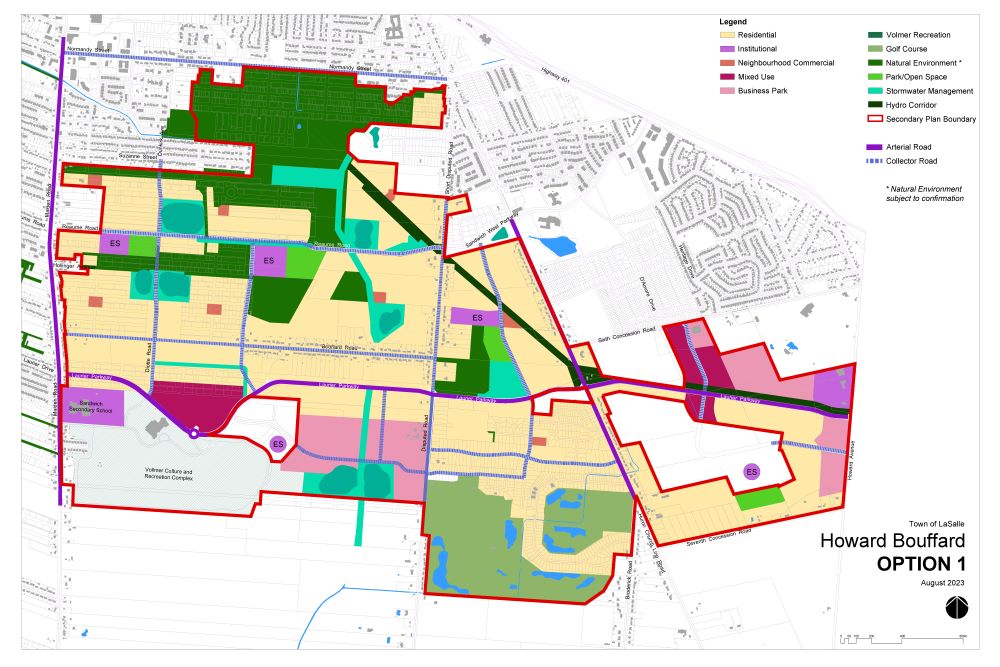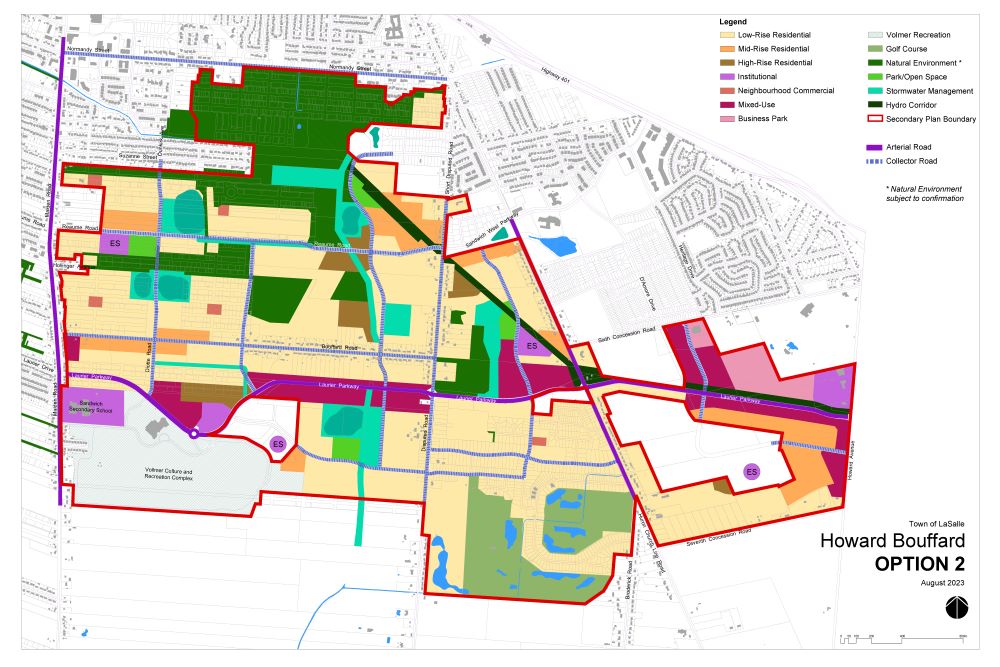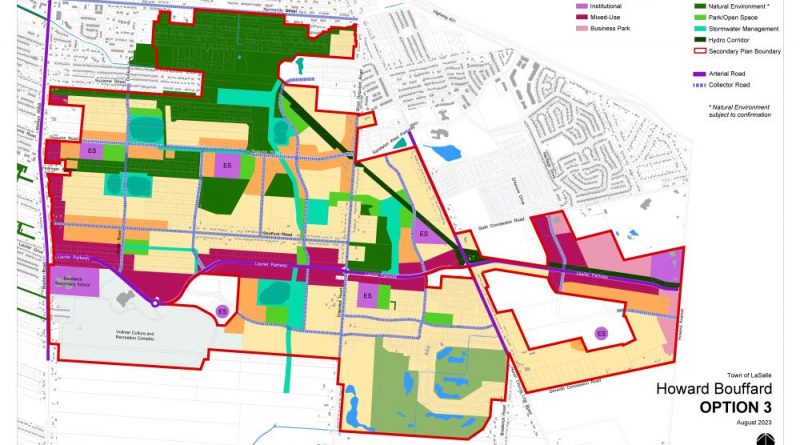To Sprawl, Or Not To Sprawl: LaSalle, Ontario Mulls Development Plan
Across the river from Detroit in the land of the rising Timbit, the suburbanizing small town of LaSalle, Ontario, is considering a controversial growth plan. It’s bad timing for thinking about suburban sprawl during a time when the conservative provincial government has controversially decided to throw out development protections for land surrounding a number of designated greenways. Is it the only way? Of course not, but Windsor-Essex especially has been pretty bad at managing sprawl over the past couple of decades. Here’s why LaSalle’s so-called Howard-Bouffard plan (named after two local roads) isn’t quite hitting the mark.

The aforementioned greenway controversy was one that Doug Ford’s government produced years ago, but has recently come back up as it turns out that a number of the big landowners in the greenway development-shed, for lack of a better term, turn out to be big conservative party donors! Shocking! As the CBC reported:
…land registry and corporate records show several well-established developers are among the owners of the Greenbelt land that’s been removed. Some of those developers have made financial donations to the Progressive Conservative Party of Ontario or its politicians. The CBC News analysis also revealed several of the properties were purchased since the Ford government came to power in 2018, including five plots in the Township of King that were purchased together in September for $80 million.
In other words, it’s not actually about promoting affordable housing development. Or, maybe it is about that secondarily, but the primary reasoning seems to be this interest in promoting business interests above all else. There are oodles of swaths of the Greater Toronto Area, for example, that still boast impressively meager population densities, while the entire province struggles with a housing shortage. There is a glimmering of possibility in this motion by the Ford government in thinking about how to promote denser development that is less car-dependent. But that’s not their primary argument, nor does it seem to be the actual reasoning.
Why am I bringing this up?

The Chrysler (of course) Canada Greenway is a prominent feature that connects Leamington with Windsor-ish. It abuts space that could also be threatened with development if the Ford government decides to push this hardline around greenway development as it is elsewhere in the province. It’s also a tremendous recreational asset. The Chrysler Greenway is mentioned in La Salle’s plans in an interest to potentially connect with existing and future trails and other greenways. Promoting development along it isn’t a bad idea, but it’s an unequivocally terrible idea it if simply involves promoting low-density development across the entire landscape without promoting denser development along corridors. Friendly reminder that more housing supply means lower price pressure on rents or sale prices, but more housing supply in greater density means lower carbon footprint and a higher density of value (and therefore economic product) per square mile, which means more municipal services that can be funded and more commercial amenities that can be supported in the local market.



Conclusion: Growth Is Inevitable. Bad Growth Is Not.
Growth is going to happen whether we like it or not. The key should be to make it so developers and property owners alike can build what they want to build as per the market demand, not be forced into building tracts of single-family, vinyl-sided housing as far as the eye can see. One of the plans proposed by a critic of the existing LaSalle plan proposed sort of corraling the development in a specific area while creating an interconnected greenway of some sort. This is interesting, and it’s probably a valuable approach. But the preponderance of single-family in this design is a losing solution, unless LaSalle wants to become just like the rest of Windsor-Essex: a landscape of suburban sprawl that continues to encroach on agricultural and natural lands, with ever-growing strains on infrastructure and ever-growing traffic congestion. We know a thing or two about that in Michigan and it’s not a great way to manage growth.
Some solutions to manage greenfield construction include assessing the full cost of new infrastructure development to the developer as part of some sort of impact fee, and perhaps even adding to that an additional impact fee to facilitate the development of denser housing elsewhere, perhaps subsidized or permanently affordable housing in a more urban area. Environmental impact assessments mean that development fees can also be used to fund things like greenway development. In any case, sprawl is the wrong solution. Unless LaSalle anf Essex County want to just be Macomb County, Michigan.




